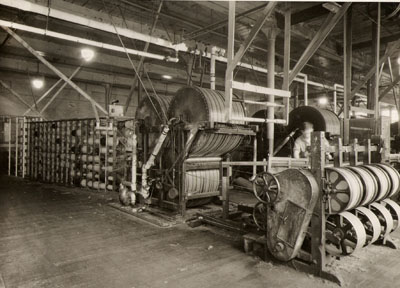Machinery in the Mills
By: Hayley S., Keisha M., Michael A.
What do you suppose the mills looked like while still in progress?
Was it safe working in the mills?
Our group
looked at photographs that showed some of the main products and machinery that
were produced in the Ludlow mills. The photos were found with slips of
labeled paper explaining the photos.In one of these pictures, there is
a sign professing caution.This implies that the mill’s laborers
worked in a dangerous environment.The Ludlow Mills’ rooms looked
dusty and unsanitary.The machines seemed as if they were rarely cleaned.The
atmosphere of the rooms shown in the photos appears full of dust and dangerous
to health.One photo shows workers dealing with the raw substance, jute,
which will later be made into twine and bagging amongst other things.Notice
it is an organized industry; messy but in order, machines dirty but labeled.It
was more difficult to guess and understand the attitude of the workers, but they
were shown working diligently.The photos observed are shown below.

Twine Baling Press
“Twine in balls is shipped from Ludlow in bales covered with burlap.
The press shown above is used to tighten up the bale while the cover is being
sewn on.”

The Making of A Ball of Twine
“The machine illustrated is a single spindle baler turning out one
ball at a time.
In order to make the ball, the twine is fed on to a rotating
spindle at an angle and this angle
is varied as the ball is made up so that the
successive layers are crossed one over the other,
thus keeping the whole in position.
The completed ball is fastened by taking several
turns of the twine around the
middle and securing the end.”

Another Series of Bagging Looms
“The operative on the right is filling his shuttle with one of the
large quills wound for the purpose.”

Webbing Loom
“Preparing warp threads for the webbing loom.”
Ludlow Manufacturing Associates
The photos
that are shown above are excellent examples about the uses and importance of
the mills’ machinery. The machines seemed stable but dangerous to
be around.The photos are also good examples about what the mills looked
like while still in operation. Though an interesting note is that the workers
seemed to take these once-amazing machines for granted already, as part of their
normal lives.So these photos are also examples of the quick advancements
regarding the machines of the Industrial Revolution and how they affected the
workers’ lives and those around them.